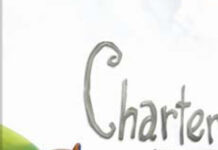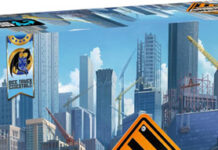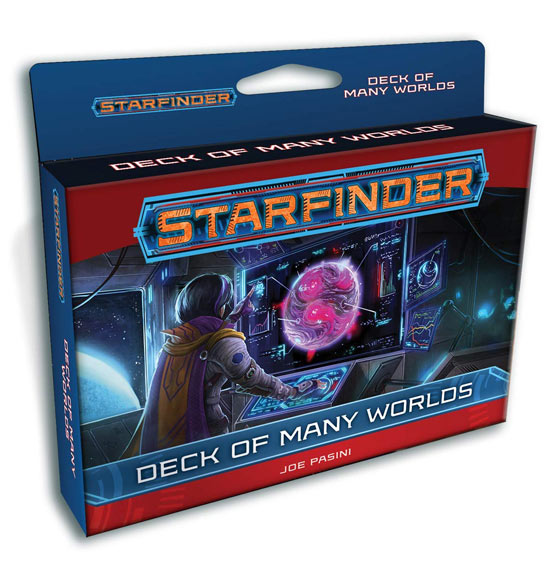
The Starfinder Roleplaying Game is a science-fiction/science fantasy role-playing game published by Paizo Publishing.
Starfinder – “Deck of Many Worlds” is a new World Generator for Starfinder Players. We recently got our hands on a box, and have a quick box opening and review for you.
Why would Starfinder players want a World Generator? Well, Space is huge and vast! And players need to populate their galaxies with planets / worlds / space stations and asteroids. There are guide books that teach you how to do this, but with “Deck of Many Worlds” you can simply combine a few random cards from this deck to randomly generate one of billions of possible world combinations. These worlds are complete with physical statistics, resident creatures, and much more—including story hooks that spur science-fantasy adventures!
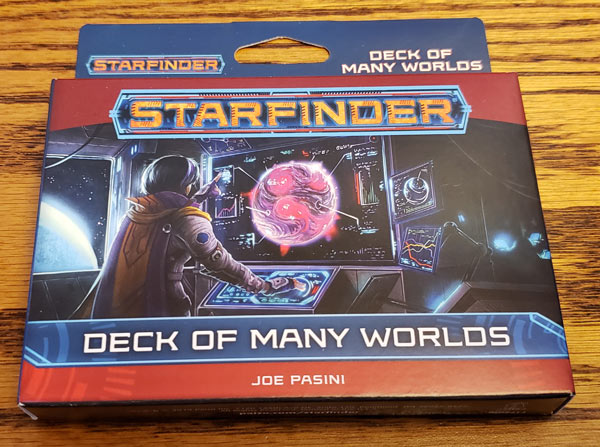
What’s in the box?
This is a relatively small box that is about 5″ wide and 3.5″ high. The box is only about 0.75″ deep. Inside the box there are 110 different cards. 10 of the cards are instructional cards. The remaining 100 cards are World Generator Cards.
Here is a glance at both sides of the 10 instructional cards:
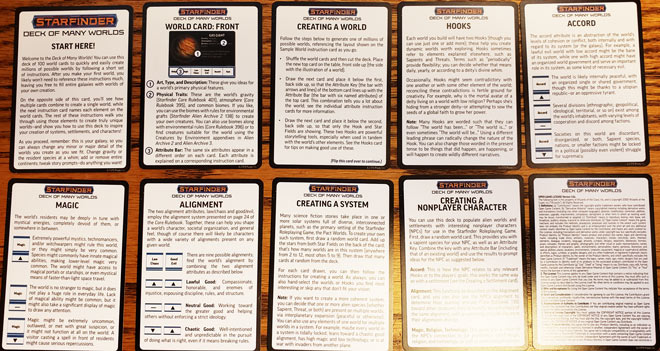
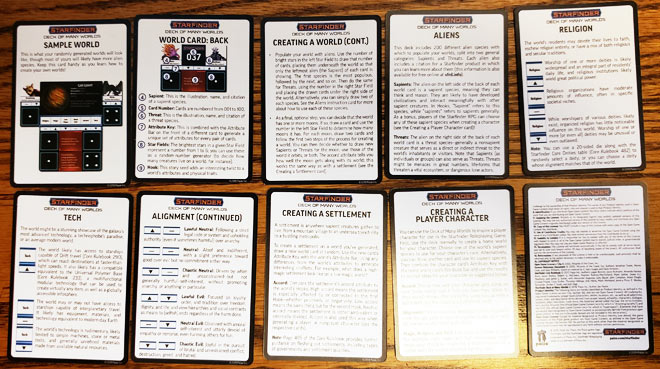
And here is a look at both sides of some World Generator Cards. The front side has Worlds with Physical Traits and attributes. The back side has the Card Number, Sapient Creatures, Threats, Attributes Keys, Star Fields and Hooks.
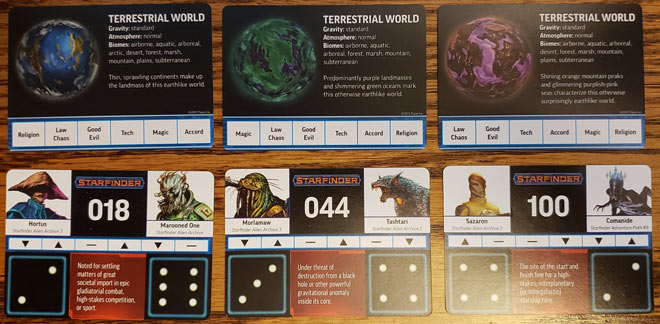
How do you Build Worlds?
Let’s create a quick settlement. First you shuffle up the Deck, and then you pull two cards at Random. Here are two cards I pulled at Random. The first thing you do lay the two cards on top of each other like so to see the attributes.
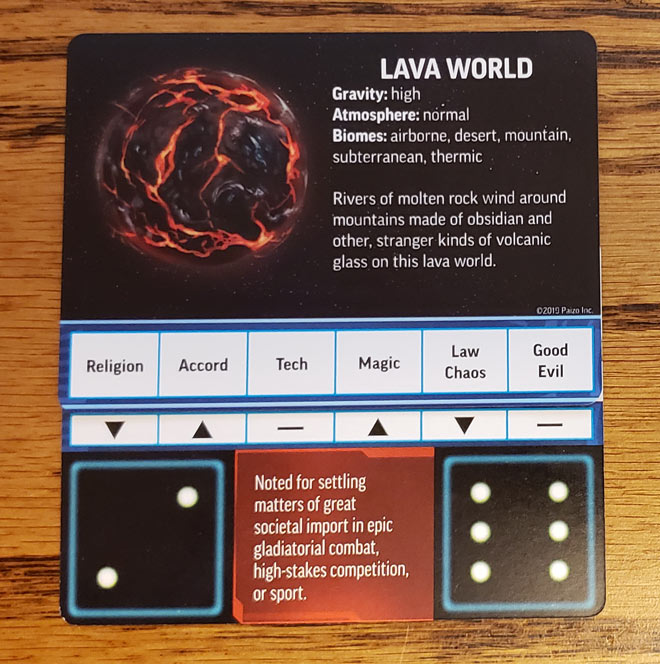
We’ve randomly created a Lava World with High Gravity, Normal Atmosphere and Desert/Mountain Biomes. This world’s residents are not very religious. They deeply in tune with Magic. The residents have medium technological capabilities. The residents have High Accord which means the settlement is especially affected by the hook. (The “Hook” is the text in the Red Box.) The two alignment attributes of Law Chaos and Good Evil employ the Alignment system from the Core Rulebook. Based on the instruction cards in the box, we have created a “Chaotic Neutral” settlement.
Each world should have have 2 or more Hooks (but you can use just one). To create more Hooks, you simply add more random card underneath the cards you have already placed.
Now let’s add some playable species and some threats. We simply pull more random cards.
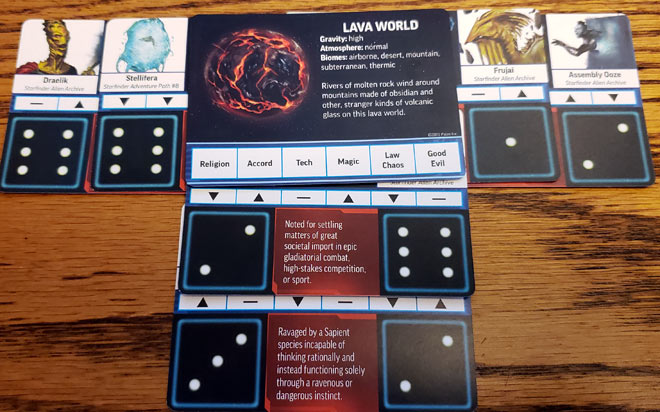
We have added in 5 more cards. We added one more hook to the bottom. We added two playable species to the left side (Draelik and Stellifera). And we’ve added two threats to the right side (Frujai and Assembly Ooze).
If you want, you can use the die faces from the first Hook card you placed to decide on the number of playable species and the number of threats. So in our example above, we could decide to make two playable species and 6 alien threats.
And that’s how easy it is to generate worlds here!
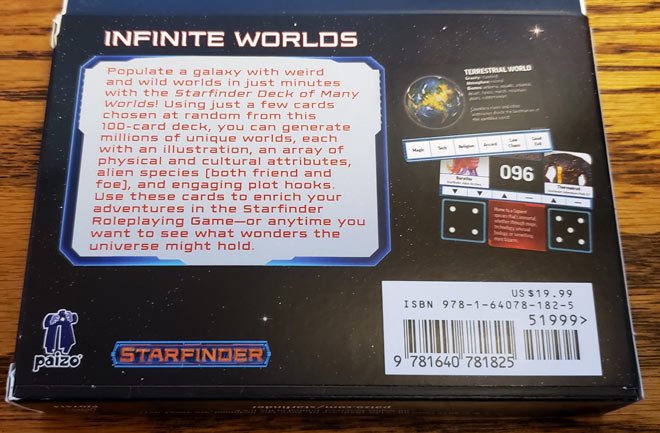
Final Thoughts
If you are running a Starfinder Group, or even other Space themed RPG, this a great resource. These cards make it super simple to come up with random worlds.
There are 100 different cards, with:
- 100 different worlds
- 100 different playable species
- and 100 different threat species
This means there are billions of different, quickly-generated, worlds at your fingertips.
The instructions are very well written and easy to understand. The card stock quality is great (as you would expect from Paizo).
The only downside I see is that you might not have books discussing all of these “playable species” and “threat species”. But you could always change your final results to match the books/resources you own.

